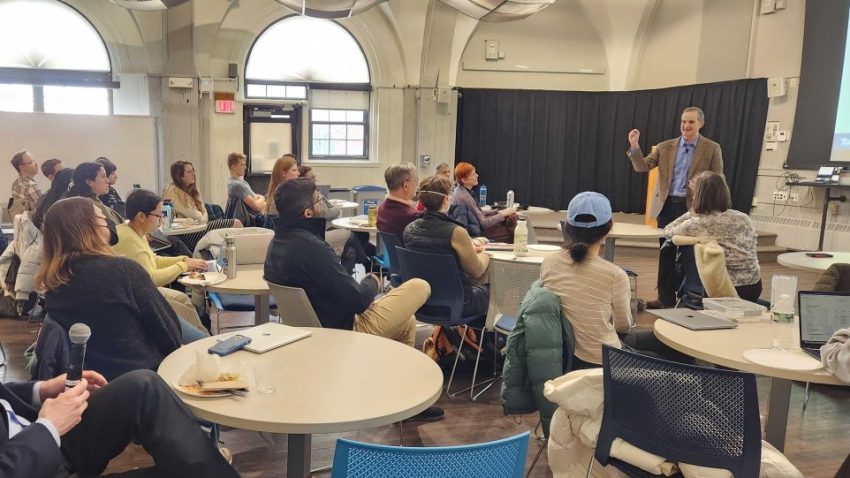
On February 1st, Chief Sustainability Officer Dano Weisbord (AG01) took the lead in a thought-provoking Hoch Cunningham Environmental Lecture, focusing on Tufts’ proactive involvement in the ongoing energy transition away from fossil fuels. A key emphasis was placed on the university’s commitment to updating its campus decarbonization plan, incorporating new funding and technology opportunities. The strategic direction involves electrifying the distribution of electricity, heating, and cooling across the campus, paving the way for a shift toward renewable and low-carbon energy sources and addressing the global sustainable development challenge of lowering carbon emissions. This decarbonization effort aligns with Tufts’ aim of achieving net-zero carbon emissions on all campuses by 2050.
“We have to solve it at every scale—we have to solve it at the household size scale, we have to solve it at the university size scale, at the state scale, the national scale,” Weisbord said.
At the university level, Tufts’ operational greenhouse gas emissions come primarily from building heating, cooling, and electricity. Currently, the Medford/Somerville campus heating operates through a district system on campus, with the Central Energy Plant creating heat using fossil fueled boilers to distribute to various areas on campus through steam and hot water. There are five additional separate districts that run off of other boilers and a few buildings that have standalone systems. Inside individual buildings, radiators, fan coils, and air handlers are used to distribute the heat. Tufts estimates that it is losing around 20% of energy from heat loss from the movement of heat through this distribution system.
Looking forward, there are multiple options for decarbonizing a university campus. The first is offsetting all emissions by buying reductions elsewhere, which would increase costs, with uncertain CO2 results, and would not be scalable. The second is using bio-based fuel sources for heating, however, the results of burning biofuels are also uncertain. The third option would be a combination of electrification and offset, with the goal of a reducing emissions by at least 90% and using carbon offsets to reduce the remaining 10% of emissions. This option would be scalable and also lower energy costs over time.
One scenario to electrify campus would start by switching to using electricity-powered heat pumps at instead of burning fossil fuels. Heat pumps are more efficient for producing lower temperature hot water (around 120 degrees F). They can distribute heat to through building radiators using hot water instead of steam. At other institutions, ground source heat pump systems have been put into place, using the constant temperature of the ground to make the heating system more efficient.
Switching to a heat pump system would require the installation of low temperature fan coils and larger radiators in older buildings on campus to ensure that they are able to keep the building warm using low temperature hot water. The upgrades would be expensive up front, but, over time, would likely result in a lower cost of operation, and therefore result in long-term cost savings. A ground source heat pump system would receive a major incentive through the Inflation Reduction Act. In addition, ground source heat pumps are a more cost-efficient way to provide energy services to Tufts’ campus at the district level. Though the initial costs of electrification system would be high, it would likely bring about savings, reduced emissions, and lower operating costs in the long-term. Using this type of heat distribution system would also reduce the distributed energy loss from 20% to 4-6%.
“All of this in the future is benefit to the university—that’s savings, that’s money that instead of spending money on fossil fuels we are now spending that money on other stuff for students, stuff for faculty, mission stuff, not operational stuff,” Weisbord said. “So the argument I would make, this is why the finance is really important, is to say if you really want to do the things you’re good at that are important to us as an institution, we need to be focused [on] a lower carbon, lower cost future.”
As he wrapped up his lecture, Weisbord emphasized the collaborative nature of the transition to low-carbon energy sources.
“We need to be thinking about how we move this transition forward,” Weisbord said. “It is a technical problem, it is a financial problem, and mostly, it’s a human problem. And that human problem, when we scale that and go back to thinking about what the energy transition means for us as a society, we’re going to have to decide and we have to find compelling ways to explain why this is important to people, to change our organizations, the places we work.”